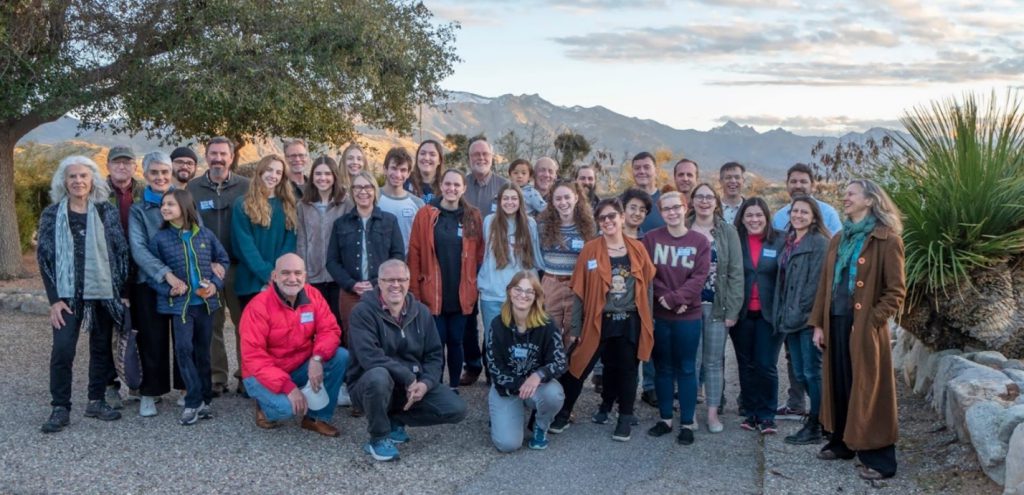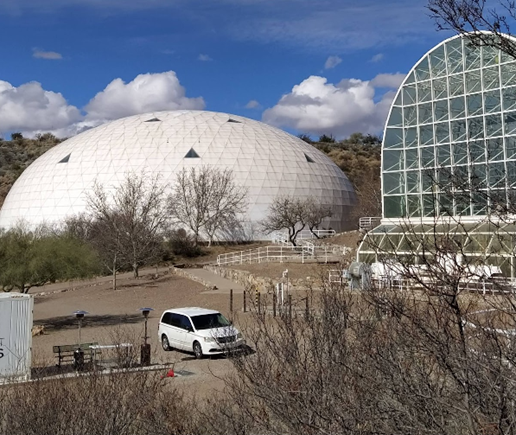The project is connecting MSVU students with exceptional research and professional development opportunity
Three students and a professor from MSVU recently embarked on a unique research trip to Tucson, Arizona, as part of an international tri-national interdisciplinary research project studying the connections between humans, nature, and migratory species.
The research project named Especies Migratorias y Gobernanza Respetuosa de sus Ambientes (EMIGRA), or Equitable Governance of Migratory Species and their Habitats in English, started ten years ago and is building a framework of knowledge on migratory species in North America to garner new insights and understanding of telecoupled systems, which refers to socioeconomic and environmental interactions among species across geography.
At a time when climate change and environmental change threaten the survival of migratory species, this project seeks to build a greater understanding of these systems toward conservation-focused interventions.
EMIGRA spans several universities across North America and connects researchers, experts, educators, and students from various fields, including biology, ecology, anthropology, geography, journalism and political science. As an interdisciplinary initiative, it brings collaborators from diverse backgrounds to garner new insights and expertise in addressing highly complex ecological issues.
The all-women team from MSVU includes three students Alyssa Babb, studying Biology; Ana Julia Gomes Nobre, studying Psychology and Neuroscience; and Alejandra González, who is pursuing a PhD in anthropology in Mexico; and team lead Dr. Columba Gonzalez-Duarte, Assistant Professor of Sociology & Anthropology.

Columba was asked to join the EMIGRA project two years ago to bring her expertise in working with the migratory monarch and doing qualitative research to the team. She emphasized the significance of this research in better understanding the correlation and impact of various socio-ecological systems on each other, which would aid in conservation efforts for migratory species in North America. Columba also said getting students involved at different stages of the research process was important. “It’s great to have students learn how to produce research and interdisciplinary research across America so they can be the next generation producing that knowledge.”
Immersive Student Research Experience
The one-week research trip to Arizona took place in February and involved immersive scientific workshops and professional development sessions for the student research team members. The group met at the famed Biosphere 2 Earth system science research facility, the largest enclosed ecological system ever built. “The biosphere created a place for teaching and learning everything related to the environment. It excited us to conduct research about the environment and biology because it was built to foster that kind of setting,” said Ana.
The research trip, funded by a grant from the National Science Foundation and hosted at the University of Arizona, gave students the opportunity to learn from and network with international researchers and experts from different fields and garner hands-on research skills. “I gained valuable experience getting involved in this project and the science behind it while learning how everyone brings different angles to research,” said Alyssa. “The trip broadened my research skills, including how to find more in-depth information and present it in a condensed format,” she said.
Ana said one of the trip’s highlights was learning to present scientific research to the public. “On the first day, we learned how to communicate environmental and conservation sciences, including writing a policy brief, presenting ourselves, and connecting with the audience. It was about learning why communicating science is important, in addition to how to use language that is accessible and accurate,” she said.

Alyssa said the student team is currently working on a list of 1,000+ species and listing them by their common name. Ana added that she also recently began gathering more data on migratory species in Spanish, with the aim of producing more inclusive science that looks at resources beyond just those published in English. Ana is one of only three students focused on this area of research specifically.
“I speak Portuguese and a little bit of Spanish, and the project got me working with species in Spanish,” said Ana, who is from Brazil. “It pushed me to research in other languages and bring those experiences and languages together.”
Equity, Diversity and Mentorship in Research
The project also serves as a mentorship and professional development opportunity, particularly for women and women of colour. Columba explained that the project has focused on equity in its research by including underrepresented groups in science. “We are trying to bring this intersectional lens to our work, and I feel the gender dynamics are changing.”
Ana added, “Coming from another country and occupying spaces in research where my voice can be heard is not commonplace in North America. This project allowed space for Latino women researchers and student researchers to have their voices heard.”
Alyssa agreed and stated, “There was a majority of student women on the trip, and everyone felt empowered to be there. It’s good to have more mentorship and diverse backgrounds in research; we need more of it.” She added, “It’s more encouraging knowing that I can have a place in this type of research.”
Alejandra, the student researcher from Mexico, commented on how important it is to have women researchers who are talented and committed to advancing socioecological studies. “I first met Dr. Gonzalez-Duarte through her texts and later in person as one of my PhD committee members. It was empowering to listen to these women raising their arguments in interdisciplinary scenarios that required hard work and commitment.”
Columba said seeing her students thrive and grow their skills has been great. “The feeling of empowerment is palpable. They arrived as one student and left as a different student. It’s very moving,” she said.